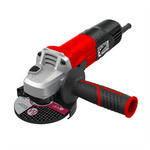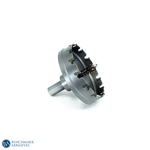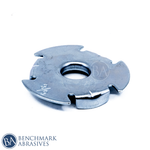
Are Ceramic Abrasive Products Superior?

Ceramic abrasive materials have become a major improvement in the field of material removal and finishing, which have been praised for their superior performance when compared to conventional abrasives. Although the assertion that they are inherently "better" necessitates a careful analysis, their special qualities—such as remarkable hardness, self-sharpening ability, and long lifespan—make them an appealing choice for a variety of demanding applications.
This blog will examine the fundamental attributes of ceramic abrasives and provide the foundation for a discussion on their benefits and drawbacks to determine if ceramic abrasives are a better option for several industrial and manufacturing processes.
WHAT ARE CERAMIC ABRASIVE MATERIALS?
Ceramic abrasive materials or products are the modern supplies used for grinding, cutting, polishing, and material removal processes. When compared to conventional abrasives, they are made up of synthetic ceramic materials that are designed for better performance and durability. Ceramic abrasives can be used in various sectors due to their amazing material removal and finishing capabilities. Some of the applications are:
- Automotive Industry: Due to its consistent finishing qualities and longevity, ceramic abrasives are used in the manufacturing of engine parts, preparing surfaces for painting, and creating brake components.
- Aerospace Industry: Vital for successful grinding and finishing hard materials such as titanium alloys and superalloys in engine parts and airframes that require high accuracy and material integrity.
- Metal fabrication: Ceramic abrasives are mainly used for cutting, grinding, weld removal, and deburring of different metals like steel and stainless steel, wherein their increased durability and high material removal rates boost productivity.
- General Industrial Use: Found in the production of tools and dies, bearings, and other precision engineering uses that are needed for precise and effective material handling.
- Surface Preparation: Ceramic abrasives are used for cleaning, preparing surfaces, and descaling for coatings in several sectors.
- Finishing Operations: Ceramic abrasives are used for getting certain surface finishes on a wide range of materials; meanwhile, they are frequently used in coarser grits for scraping debris initially before using finer abrasives.
PROS AND CONS OF CERAMIC ABRASIVE PRODUCTS
The particular application and the intended result will determine if ceramic abrasive materials are "better" than other kinds of abrasives. Here is a brief of their pros and cons:
PROS:
The following are the pros of ceramic abrasive products:
- Longer lifespan: Ceramic abrasives are highly durable, i.e., they last longer, up to 6 times compared to aluminum oxide or zirconia abrasives, because of their amazing hardness and self-sharpening properties.
- Self-sharpening ability: These abrasives have self-sharpening abilities. They tend to micro-fracture during use, revealing new and sharp edges and ensuring consistent cutting performance.
- High material removal rate: Ceramic abrasives have a high material removal rate compared to other abrasives due to their aggressive material removal, which comes from their durability and sharpness.
- Reduced Heat Generation: Compared to certain other abrasives, they typically cut cooler, which lowers the possibility of heat damage or workpiece discoloration.
- Less Pressure Needed: Because they are sharp, they frequently require less operator pressure, which lessens fatigue.
- Suitable for hard materials: Ceramic abrasives work best when dealing with hard materials like stainless steel, titanium alloys, hardened steels, and also some aluminum castings and mild steel.
CONS:
The following are the cons of ceramic abrasive products:
- High Cost: Ceramic abrasives are generally expensive compared to zirconia and aluminum oxide. But when we talk about its durability, it balances the initial cost. On the other hand, their prolonged longevity may eventually make up for this.
- Heat sensitivity: Although they tend to run cooler, they are susceptible to high temperatures and pressures, which can lead to early grain breakage. The correct technique is important.
- Not suitable for fine finishing: Ceramic abrasives are not suitable for fine finishing as they are available in coarser grits, which are perfect for removing material instead of producing a fine finish.
- Not ideal for wood: Despite their speedy wood removal capabilities, they are not the ideal option for smooth wood surfaces and cannot make good use of their self-sharpening qualities on softer materials.
- Brittle in nature: Excessive force can cause the ceramic grains to break easily due to their structure.
COMPARING CERAMIC ABRASIVES TO OTHER ABRASIVES
Here is a brief comparison of ceramic abrasives to other abrasives, including:
- Aluminum Oxide: When compared with ceramics, aluminum oxide is more economical and highly flexible for general-purpose use on metal and wood. They are available in a wide range of grits to choose from and are perfectly suitable for fine finishing.
- Zirconia Abrasives: These abrasives are superior for applications requiring high pressure on stainless steel and steel, and are harder than aluminum oxide. These abrasives are generally suitable for moderate to coarse grinding and have strong heat resistance. Zirconia abrasives are comparatively less expensive than ceramic, although it doesn't last as long as ceramic.
CONCLUSION
The "best" abrasive is determined only by the material that is being worked on, the necessary polish, the desired rate of material removal, the working circumstances (speed, pressure), and the total cost.



































































